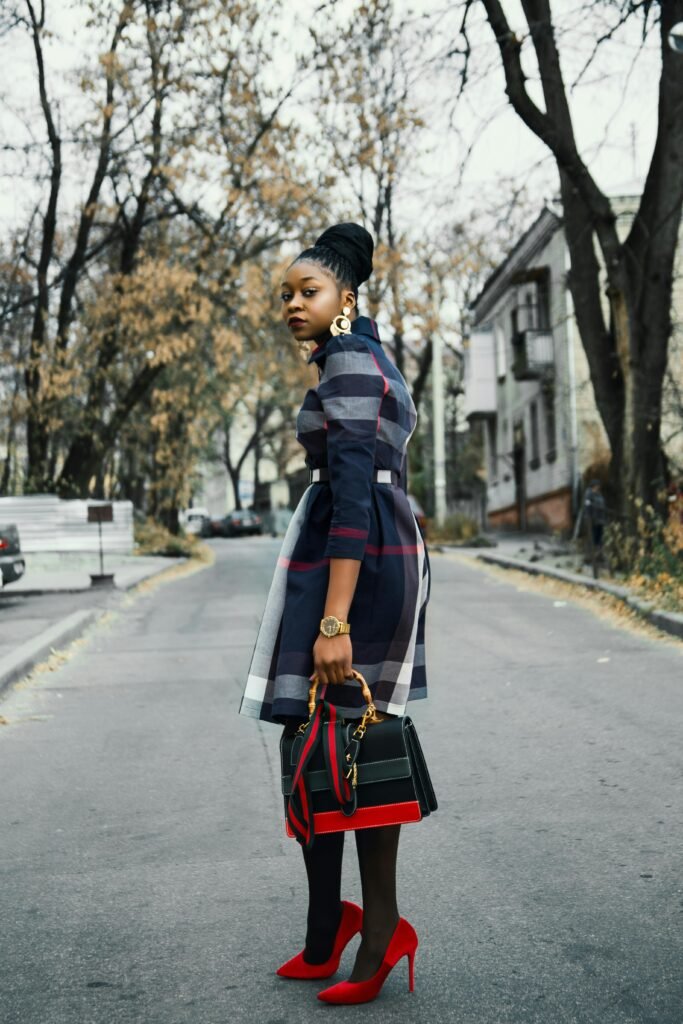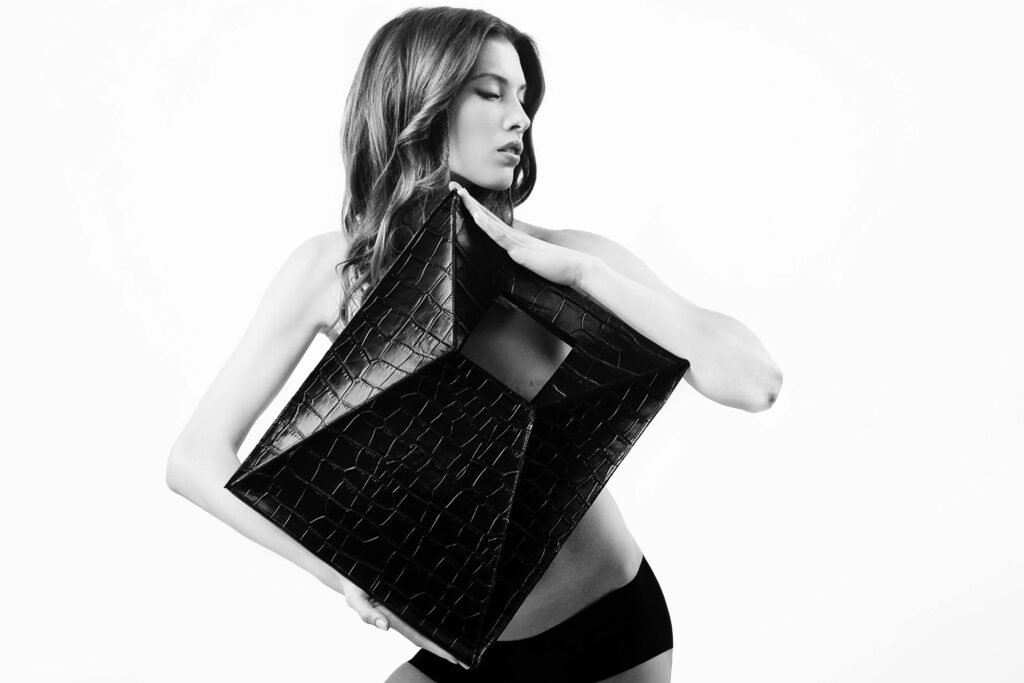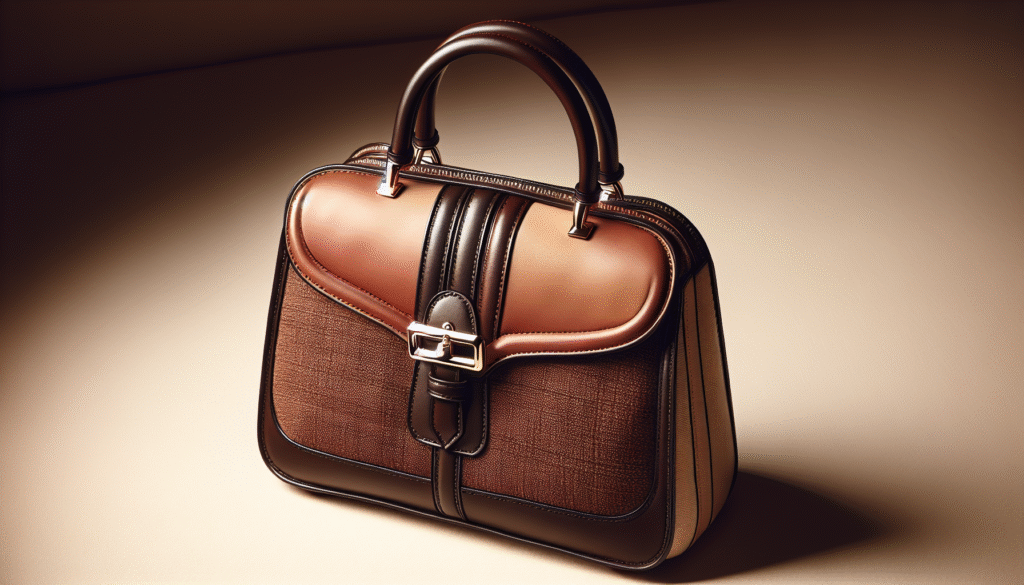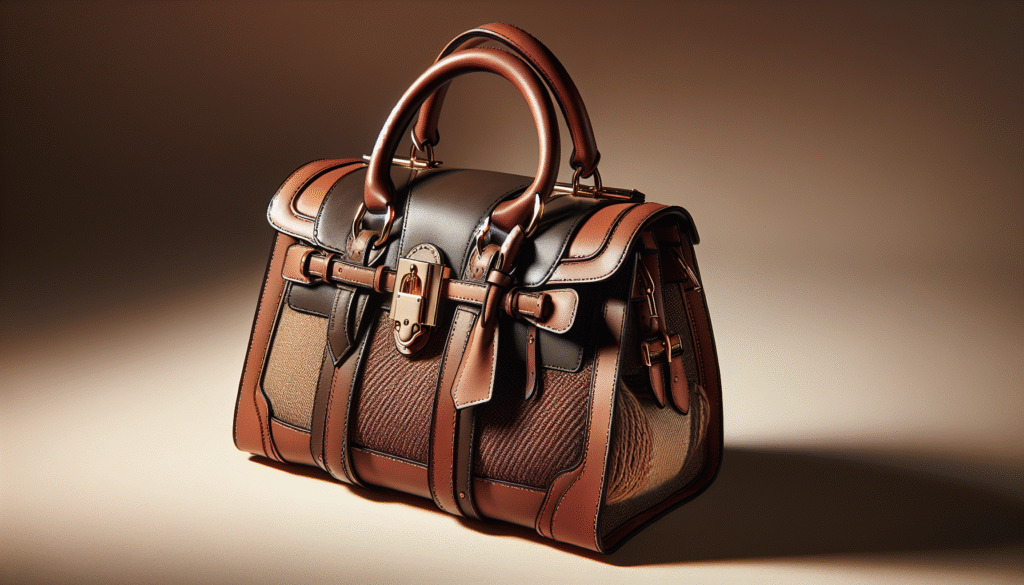Are you ready to find the perfect handbag that suits your lifestyle, wardrobe, and care routine?
Handbags for Women: The Ultimate Guide to Styles, Materials, and Care
This guide helps you understand the many styles of Handbags for Women, the materials they’re made from, and how to care for them so your Designer Bags last longer and look their best. You’ll get practical tips for choosing a bag, keeping it clean, and repairing common issues, all written in a friendly, straightforward way.

Why the right Handbags for Women matter
Handbags for Women are more than a functional item — it’s a statement, an organizer, and a daily companion. The right Handbag can elevate your outfit, protect your essentials, and make errands and events easier. You’ll want to consider size, style, material, and maintenance needs when selecting a handbag.
How to use this guide for Handbags for Women
This article walks you through styles, materials, sizing, features, purchasing tips, care instructions, and troubleshooting of Handbags for Women. Read sections that match what you need now — whether you’re buying a first luxury bag, keeping your favorite tote in good shape, or learning how to clean canvas and leather safely.
Additionally, you need to keep lot of things in mind before buying Handbags for Women.
Common Handbags for Women styles
Choosing Handbags for Women often starts with the occasion. Below are the most common styles and the situations where they shine.
Tote Bags
Tote Bags are roomy, usually open-topped, and built for carrying a lot. You’ll love a tote for work, school, shopping trips, and travel because it fits folders, tablets, and daily essentials.
Shoulder Bag
A Shoulder Bag hangs comfortably from one shoulder and come in structured and slouchy forms. These are versatile everyday options that balance style with accessibility.
Crossbody Bags
Crossbody Bags have a long strap that goes across your torso, leaving your hands free. They’re ideal for travel, concerts, or days when you move a lot and want security and convenience.
Satchels and structured bags in Handbags for Women
Satchels are often more formal, with a top handle and a structured silhouette. Choose one for professional settings or events when you want a polished look in Handbags for Women.
Hobo Bags
Hobo Bags have a crescent shape and typically a slouchy feel. These are casual and comfortable, great for weekend wear or informal outings.
Clutches and evening bags in Handbags for Women
In Handbags for Women, Clutches and small evening bags are for nights out and formal events. They carry only essentials, so pick one that complements your outfit without overwhelming it.
Bucket bags
Bucket bags combine casual chic with a roomy interior and a drawstring closure. Use one when you want style with an easy-access interior.
Belt bags and fanny packs
Worn around the waist or across the chest, belt bags keep essentials close and are perfect for active days or travel when you want hands-free security.
Backpacks and mini backpacks in Handbags for Women
Backpacks are practical for commuting, travel, and hands-free carrying. Mini backpacks give the look without the full size.
Convertible and multiway bags
Convertible bags adapt to different carrying styles (e.g., shoulder to crossbody). They’re ideal if you want versatility from a single purchase.
Quick comparison: handbag styles at a glance
| Style | Capacity | Best for | Formality |
|---|---|---|---|
| Tote | High | Work, travel, shopping | Casual to casual-formal |
| Shoulder bag | Medium | Everyday | Casual to formal |
| Crossbody | Small–medium | Travel, errands | Casual to smart-casual |
| Satchel | Medium | Office, meetings | Formal to professional |
| Hobo | Medium | Casual, weekend | Casual |
| Clutch | Very small | Evenings, events | Formal |
| Bucket | Medium | Casual-chic | Casual |
| Belt bag | Very small | Active, travel | Casual |
| Backpack | Medium–high | Commute, travel | Casual |
| Convertible | Varies | Versatile needs | Varies |
Understanding Handbags for Women materials
In Handbags for Women, Materials define look, durability, care needs, and price. You’ll see leather, faux leather, suede, canvas, nylon, and specialty materials like straw or patent finishes.
Leather types in Handbags for Women
Leather is prized for durability and age. Different leather grades affect price and care requirements.
Full-grain leather
Full-grain leather retains the natural surface and develops a patina. It’s durable and will age beautifully, though it needs regular conditioning.
Top-grain leather
Top-grain is sanded and finished for uniformity. It resists staining but is slightly less natural than full-grain.
Corrected-grain and bonded leather
Corrected-grain is heavily processed to remove imperfections; bonded leather is made from scraps. Both are price-conscious options but less durable than full- or top-grain.
Faux leather (PU, vegan leather)
Faux leather mimics real leather and is easier to care for, but it may crack over time. Choose high-quality PU for better longevity.
Suede and nubuck
Suede is the underside of leather and has a velvety texture, while nubuck is buffed outside grain. Both are luxurious but attract stains and require protective sprays.
Canvas in Handbags for Women
Canvas is durable, lightweight, and often washable. It’s ideal for casual bags and from sustainable brands using organic cotton.
Nylon and technical fabrics
Nylon and other synthetics are water-resistant and easy to clean. They’re common in sporty and practical bags.
Patent and coated finishes
Patent, PVC, or coated leather gives a glossy look and resists moisture but can scratch and show signs of wear.
Natural materials: straw, raffia, woven textiles
Straw and woven materials create seasonal, lightweight bags for warm weather. They’re delicate and need gentle care.

Material comparison in Handbags for Women: pros, cons, and care
| Material | Pros | Cons | Basic care |
|---|---|---|---|
| Full-grain leather | Extremely durable, ages well | Costly, needs conditioning | Clean with damp cloth, condition 2–4x/year |
| Top-grain leather | Uniform look, durable | Less natural character | Wipe gently, condition periodically |
| Faux leather | Affordable, easy to clean | Can peel/crack | Wipe with damp cloth, avoid heat |
| Suede/nubuck | Luxurious texture | Stains easily | Use suede brush, protective spray |
| Canvas | Durable, washable | Can stain, less formal | Spot clean, hand wash if needed |
| Nylon | Lightweight, water-resistant | Can pill or fade | Wipe clean, mild soap |
| Patent | Shiny, wipeable | Scratches, sticky in heat | Wipe with damp cloth, polish gently |
| Straw/raffia | Lightweight, seasonal | Fragile, discolors | Keep dry, store flat, spot clean |
Choosing Handbags for Women by body type and height
Proportion matters in Handbags for Women. You’ll want a bag that complements your frame rather than overpowering or disappearing against it.
Petite frames in Handbags for Women
Choose smaller to medium-sized bags with shorter handles and slim straps. Crossbodies and small satchels tend to flatter petite figures.
Average height
You can handle a variety of sizes; choose based on function. Medium totes, shoulder bags, and satchels often work well.
Tall frames
Larger totes, oversized shoulder bags, and slouchy hobos match your scale. Longer straps help balance proportions.
Plus-size considerations
Structured bags can create clean lines, while medium-size styles keep balance. Avoid extremely small clutches for everyday use.
Matching Handbags for Women style to occasions
Different events call for different bag choices. You’ll find practical recommendations below.
Work and professional settings
Select structured satchels, medium totes, or sleek shoulder bags that hold documents and tech. Neutral tones and quality materials create a professional impression.
Casual everyday wear in Handbags for Women
Crossbody bags, medium totes, and hobos suit daily routines. Prioritize comfort and durability.
Travel and commuting
Look for crossbodies, backpacks, or secure totes with zip closures. Consider anti-theft features and interior organization.
Special events and evenings
Clutches or small evening bags in complementary materials (satin, leather, metallics) work best. Choose one that matches your outfit and holds essentials like phone, cards, and lipstick.
Active or outdoor days
Water-resistant materials, belt bags, and backpacks keep your hands free and protect essentials from weather.

Key handbag features to consider
Features affect usability and comfort. Think about closures, straps, pockets, hardware, and lining.
Closures: zipper, flap, magnetic, drawstring
Zippers offer security; flaps and magnetic snaps are stylish and quick; drawstrings suit bucket bags. Match the closure to how secure and accessible you want your items to be.
Straps and handles: length and attachment
Adjustable straps increase versatility. Removable straps allow multiple carrying styles. Reinforced attachments last longer.
Pockets and organization in Handbags for Women
Interior zip pockets, slip pockets, and dedicated tech compartments keep you organized. Decide if you need a phone pocket or a key clip.
Hardware quality
Metal hardware influences longevity and style. Look for solid clasps, smooth zippers, and plated metals that resist tarnish.
Lining materials
Lining can protect the interior and prevent snags. Cotton, nylon, and microfiber are common; lighter linings help you find small items.
How to pick the perfect color and finish
Color plays a big role in versatility. Neutrals like black, brown, navy, and tan pair with many outfits, while seasonal or statement colors add personality. Consider your wardrobe palette: choose one neutral for everyday wear and an accent color for seasonal looks.
Budgeting and value: how much should you spend in Handbags for Women?
Decide what matters most: trendiness, durability, or craftsmanship. Higher-quality leather and brand craftsmanship often justify higher prices. If you buy frequently, invest in a few timeless pieces rather than many fast-fashion items.

Authenticity and buying tips for Handbags for Women
If you’re buying Handbags for Women, verify authenticity through serial numbers, brand hallmarks, packaging, and receipts. Purchase from reputable retailers or certified resellers. Be wary of prices that are too-good-to-be-true.
Sustainability and ethical choices in Handbags for Women
Sustainable handbag options include vegetable-tanned leather, recycled materials, and brands with transparent supply chains. You can also shop pre-owned, which extends the life of a bag and reduces waste.
Caring for Handbags for Women: daily habits
Good daily habits extend the life of your Designer Handbags. Remove sharp objects that could tear linings, avoid overstuffing, and rotate bags to reduce wear.
Quick daily checklist for Handbags for Women
- Empty crumbs and debris.
- Keep makeup in a pouch to prevent stains.
- Reposition straps when storing to avoid creases.

Cleaning and maintenance by material
Different materials need different care routines. Below are safe methods you can follow.
Leather cleaning and conditioning
Wipe leather with a soft, slightly damp cloth for surface dirt. Use a pH-balanced leather cleaner for deeper cleaning and follow with conditioner to restore oils. Avoid soaking leather or using household solvents.
Suede and nubuck care
Brush with a suede brush to lift dirt. Use a specialized cleaner for stubborn stains and always test on an inconspicuous area. Apply a protective suede spray for water and stain resistance.
Faux leather care
Wipe faux leather with a damp cloth and mild soap. Avoid heat and direct sunlight which can cause cracking. Conditioners designed for PU can sometimes extend life.
Canvas and fabric cleaning
Spot-clean with mild soap and water. For removable linings, follow garment washing instructions. Avoid machine washing unless specified.
Nylon and technical fabric care
Wipe with a damp cloth and mild detergent. For heavy soiling, hand wash gently and air dry.
Straw, raffia, and woven materials
Keep these dry and avoid heavy loads. Brush off dirt gently and spot-clean with a damp cloth. Store flat to prevent crushing.
Protecting Handbags for Women from weather and stains
To protect Handbags for Women, use protective sprays appropriate for the material (test first). Keep leather away from heavy rain when possible; if wet, blot and air dry naturally. For lightweight fabrics, pack essentials in pouches to prevent spills.
Storage best practices for Handbags for Women
Proper storage prevents damage and maintains shape.
Short-term storage
Empty the bag and keep it on a shelf or in a closet, not on the floor. Use dust bags for dust protection.
Long-term storage
Stuff the bag with acid-free tissue paper or bubble wrap (avoid newspaper) to preserve shape. Store in a breathable dust bag in a cool, dry place.
Avoiding common storage mistakes
Don’t hang heavy bags by straps for long periods — this can stretch leather and distort shape. Avoid plastic bags that trap moisture and foster mildew.
Repairs and when to see a professional
Minor issues — loose stitching, scuffed corners, or hardware problems — can be fixed at home or by a cobbler. For major repair (lining replacement, structural work, strap replacement), consult a professional leather repair service.
DIY quick fixes
- Scuffs on smooth leather: gently buff with a soft cloth and apply conditioner.
- Loose zipper: realign teeth with pliers and lubricate with wax or graphite.
- Faded color on faux leather: use a color-matched leather paint or dye designed for synthetics.
When to replace Handbags for Women
Replace a bag when it no longer functions for your needs, when repairs cost more than the bag’s value, or when severe structural damage appears. For sentimental or investment pieces, consider professional restoration.
Packing and organizing your handbag
Efficient packing reduces wear and improves functionality.
Essentials to always carry
Phone, wallet, keys, tissues, compact makeup, and a small sanitizer. Use smaller pouches to keep items organized and prevent spills inside the bag.
Using bag organizers and inserts
Bag organizers preserve shape and make swapping handbags easier. They also protect linings and help you find items quickly.
Accessorizing and personalizing your handbag
Add a scarf, charm, or strap to personalize your bag. Use high-quality accessories to avoid damaging the bag or reducing its resale value.
Resale, consignment, and donating
When you’re ready to part with a bag, decide between resale, consignment, or donation. Clean and photograph the bag clearly if selling. Honest descriptions and proof of authenticity increase buyer confidence.
Trends vs. timeless pieces
Fashion cycles fast, but some silhouettes are evergreen. If you want a lasting wardrobe, mix trend-driven items with classic pieces like a neutral leather tote or a structured satchel.
Suggested images and video topics to include (for content creators)
Although images and video aren’t embedded here, these suggestions will help you if you plan to add visual media:
- Images: close-ups of different materials (full-grain leather, suede, canvas), photos showing size comparisons on different body types, and before/after care photos.
- Video topics: how to clean leather step-by-step, organizing a large tote for daily work, identifying authentic designer hardware, and making quick repairs like zipper realignment.
Search queries you can use for sourcing visuals and videos: “leather handbag cleaning tutorial,” “compare tote vs satchel size,” “how to spot fake designer bag,” and “organize your handbag pack.”
Frequently asked questions (FAQ)
How often should I condition a leather handbag?
Condition 2–4 times a year depending on climate and use. In dry climates or with heavy use, condition more often.
Can I get suede wet?
Try to avoid getting suede wet. If it gets damp, blot gently and let it air dry, then brush when dry.
Is faux leather bad for the environment?
Faux leather can be less durable and contains plastics, but newer plant-based and recycled options offer more sustainable choices.
How do I remove pen stains from a lining?
Use a gentle stain remover or rubbing alcohol on a cotton swab, testing an inconspicuous area first. For persistent stains, consult a professional cleaner.
What’s the best way to protect straw bags?
Keep them dry, avoid heavy items, and store flat to prevent warping.
Final tips for caring for your handbag
- Rotate your bags to reduce wear.
- Store properly in dust bags and with shape-supporting stuffing.
- Keep emergency repair tools like a small sewing kit or a leather repair balm on hand.
- Invest in quality for core pieces you’ll use daily.
- Treat stains and damage early to prevent permanent issues.
Closing thoughts
Choosing and caring for Handbags for Women is part style decision, part practical routine. With the right knowledge about styles, materials, and maintenance, you’ll get more life and enjoyment from your handbags. Whether you prefer structured leather for work or a lightweight canvas for weekends, treating each bag according to its material and intended use will keep your collection looking great for years.


